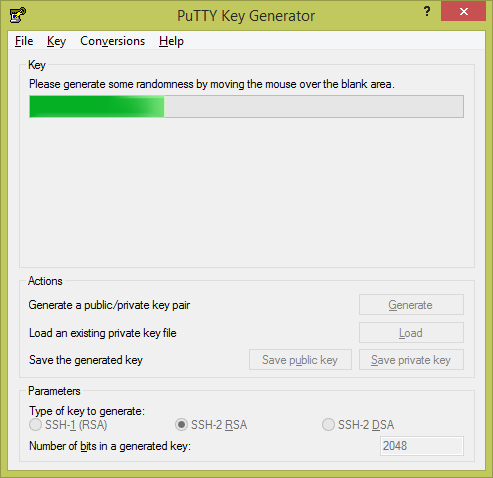Rsa 2048 Generate Public Private Key
Keygen for microsoft office 365. Office 365 Key provides 1TB of space on One Drive keeping your data safe and secure. This advanced feature helps you to transform your existing processes to keep your business moving forward. It transforms the way of work with its incredible cloud services. Moreover, you can customize your workflow by integrating services from other applications to Microsoft apps to enhance the productivity of your work.
Openssl generate private key with password. Use the following command to generate your private key using the RSA algorithm: $ openssl genrsa -aes256 -passout pass:foobar -out private.key 2048 - Use the following command to extract your public key: $ openssl rsa -in private.key -passin pass:foobar -pubout -out public.key - Use the following command to sign the file: $ openssl dgst -sha512 -sign private.key -passin pass:foobar -out. To then obtain the matching public key, you need to use openssl rsa, supplying the same passphrase with the -passin parameter as was used to encrypt the private key: openssl rsa -passin file:passphrase.txt -pubout (This expects the encrypted private key on standard input - you can instead read it from a. Note: take into account that my final goal is to generate a p12 file by combining the certificate provided according to the CSR and the private key (secured with a password). Cryptography certificates openssl pe.
- Rsa 2048 Generate Public Private Key Cryptography
- Rsa 2048 Generate Public Private Key Pair
- 2048 Bit Rsa Key
Generating RSA Public Private Key. We can use factory method to generate these keys using KeyPairGenerator. For the demo purpose we are using a key size of 1024. By default, the private key is generated in PKCS#8 format and the public key is generated in X.509 format. Once these keys are generated, either you can write these keys in a file. (RSA keys, 2048 bits.) Click Generate. Move your mouse to the appropriate area of the window as directed. Click Save public ke y. Save the public key in a safe place with a recognizable name. (PublicWin) Click Save private ke y. Click Yes when presented with the PuTTYgen warning about a blank passphrase.
Download and install the OpenSSL runtimes. If you are running Windows, grab the Cygwin package.
OpenSSL can generate several kinds of public/private keypairs.RSA is the most common kind of keypair generation.[1]
Other popular ways of generating RSA public key / private key pairs include PuTTYgen and ssh-keygen.[2][3]
Generate an RSA keypair with a 2048 bit private key[edit]
Execute command: 'openssl genpkey -algorithm RSA -out private_key.pem -pkeyopt rsa_keygen_bits:2048'[4] (previously “openssl genrsa -out private_key.pem 2048”)
e.g.
Make sure to prevent other users from reading your key by executing chmod go-r private_key.pem afterward.
Extracting the public key from an RSA keypair[edit]
Execute command: 'openssl rsa -pubout -in private_key.pem -out public_key.pem'
Rsa 2048 Generate Public Private Key Cryptography
e.g.
A new file is created, public_key.pem, with the public key.
It is relatively easy to do some cryptographic calculations to calculate the public key from the prime1 and prime2 values in the public key file.However, OpenSSL has already pre-calculated the public key and stored it in the private key file.So this command doesn't actually do any cryptographic calculation -- it merely copies the public key bytes out of the file and writes the Base64 PEM encoded version of those bytes into the output public key file.[5]
Viewing the key elements[edit]
Execute command: 'openssl rsa -text -in private_key.pem'
All parts of private_key.pem are printed to the screen. This includes the modulus (also referred to as public key and n), public exponent (also referred to as e and exponent; default value is 0x010001), private exponent, and primes used to create keys (prime1, also called p, and prime2, also called q), a few other variables used to perform RSA operations faster, and the Base64 PEM encoded version of all that data.[6](The Base64 PEM encoded version of all that data is identical to the private_key.pem file).

Password-less login[edit]
Often a person will set up an automated backup process that periodically backs up all the content on one 'working' computer onto some other 'backup' computer.
Because that person wants this process to run every night, even if no human is anywhere near either one of these computers, using a 'password-protected' private key won't work -- that person wants the backup to proceed right away, not wait until some human walks by and types in the password to unlock the private key.Many of these people generate 'a private key with no password'.[7]Some of these people, instead, generate a private key with a password,and then somehow type in that password to 'unlock' the private key every time the server reboots so that automated toolscan make use of the password-protected keys.[8][3]
Further reading[edit]
Rsa 2048 Generate Public Private Key Pair
- ↑Key Generation
- ↑Michael Stahnke.'Pro OpenSSH'.p. 247.
- ↑ ab'SourceForge.net Documentation: SSH Key Overview'
- ↑'genpkey(1) - Linux man page'
- ↑'Public – Private key encryption using OpenSSL'
- ↑'OpenSSL 1024 bit RSA Private Key Breakdown'
- ↑'DreamHost: Personal Backup'.
- ↑Troy Johnson.'Using Rsync and SSH: Keys, Validating, and Automation'.
- Internet_Technologies/SSH describes how to use 'ssh-keygen' and 'ssh-copy-id' on your local machine so you can quickly and securely ssh from your local machine to a remote host.